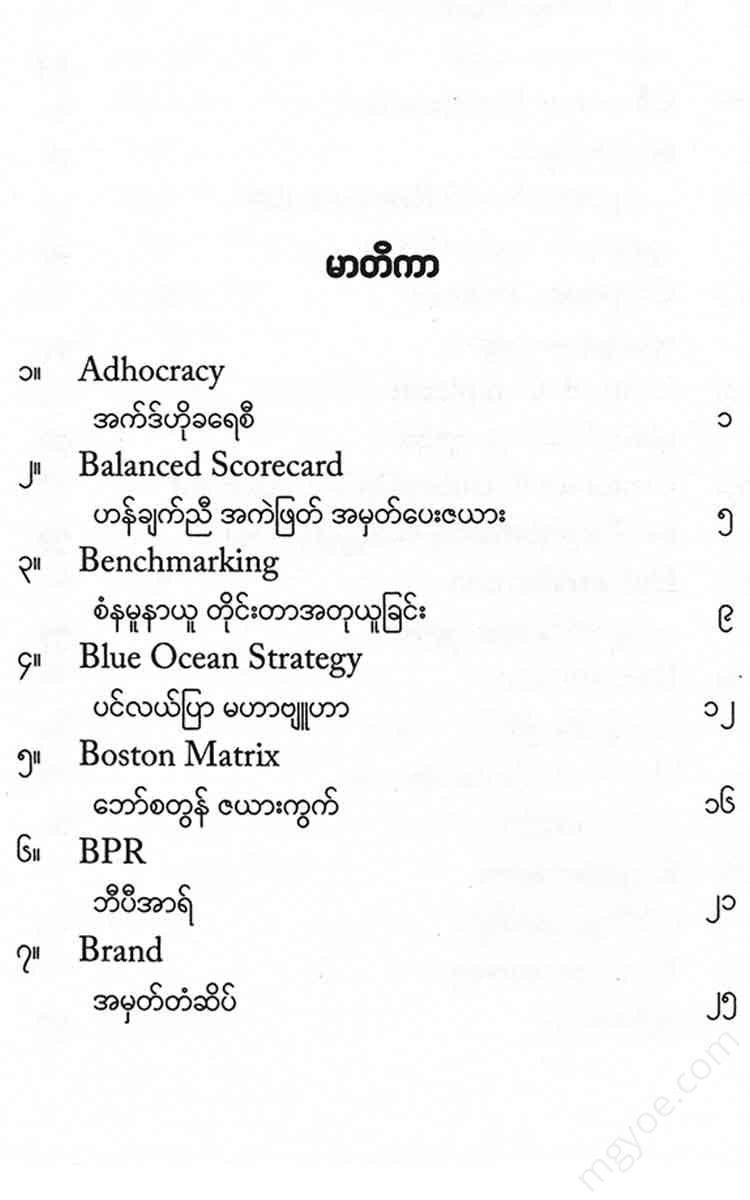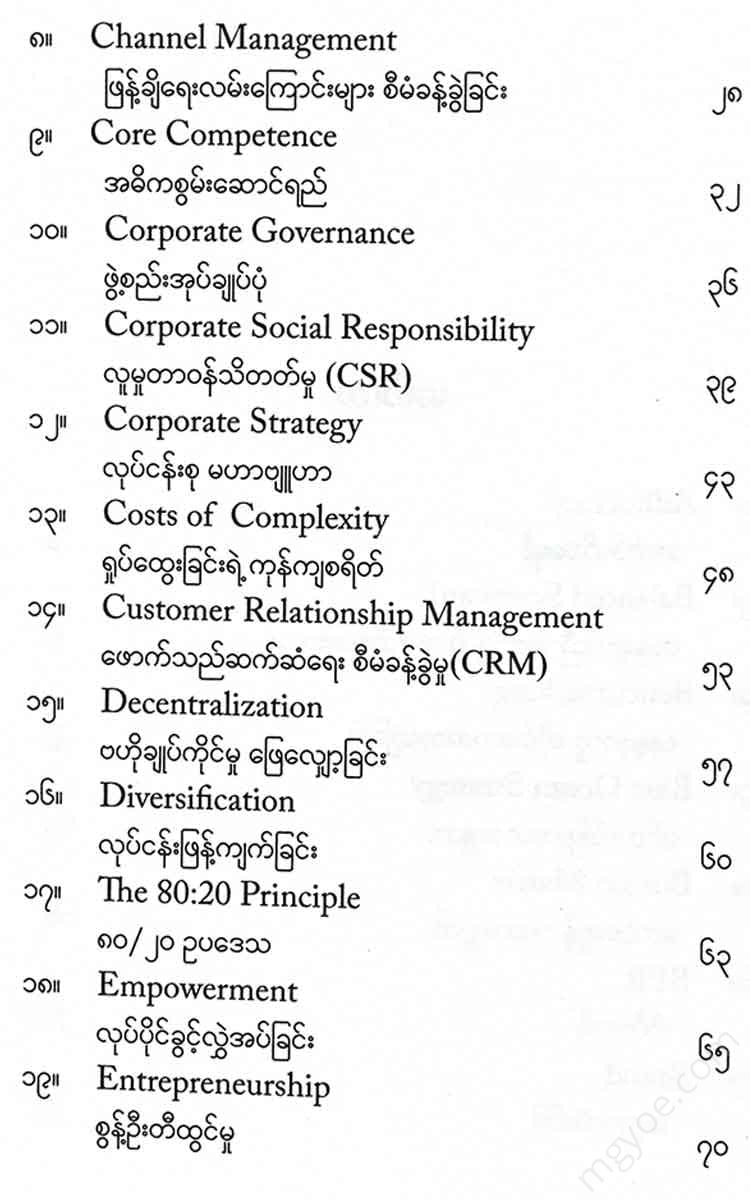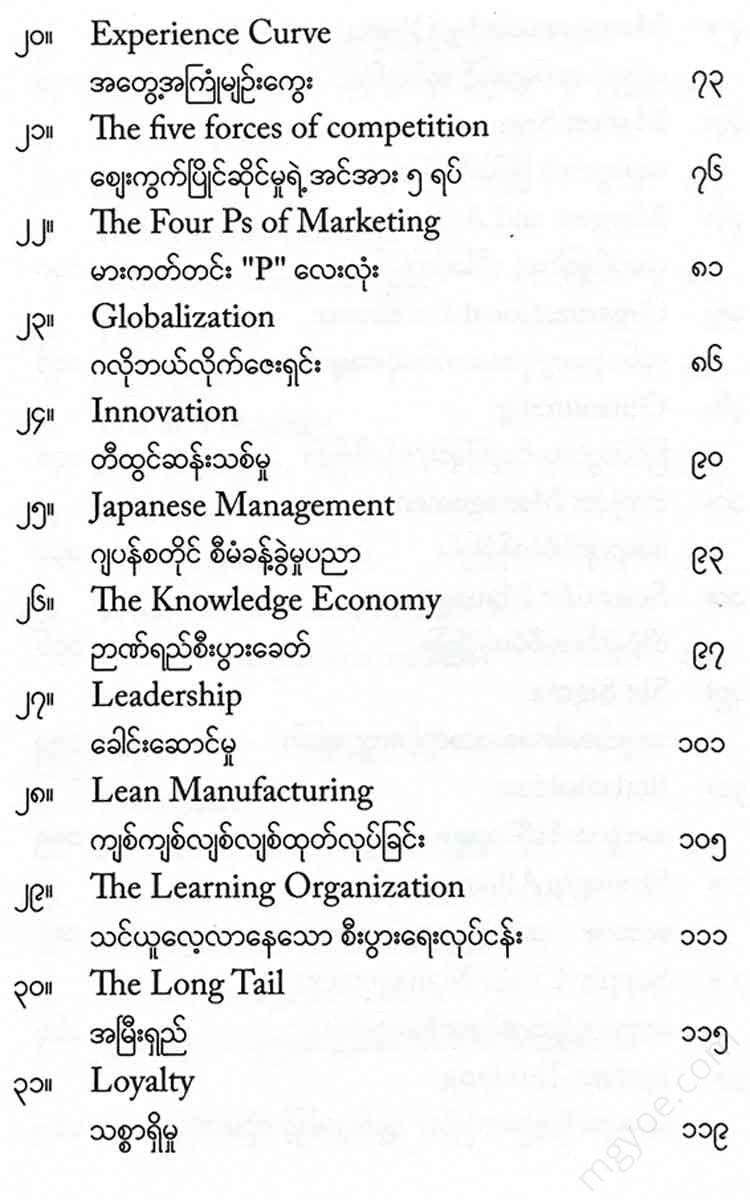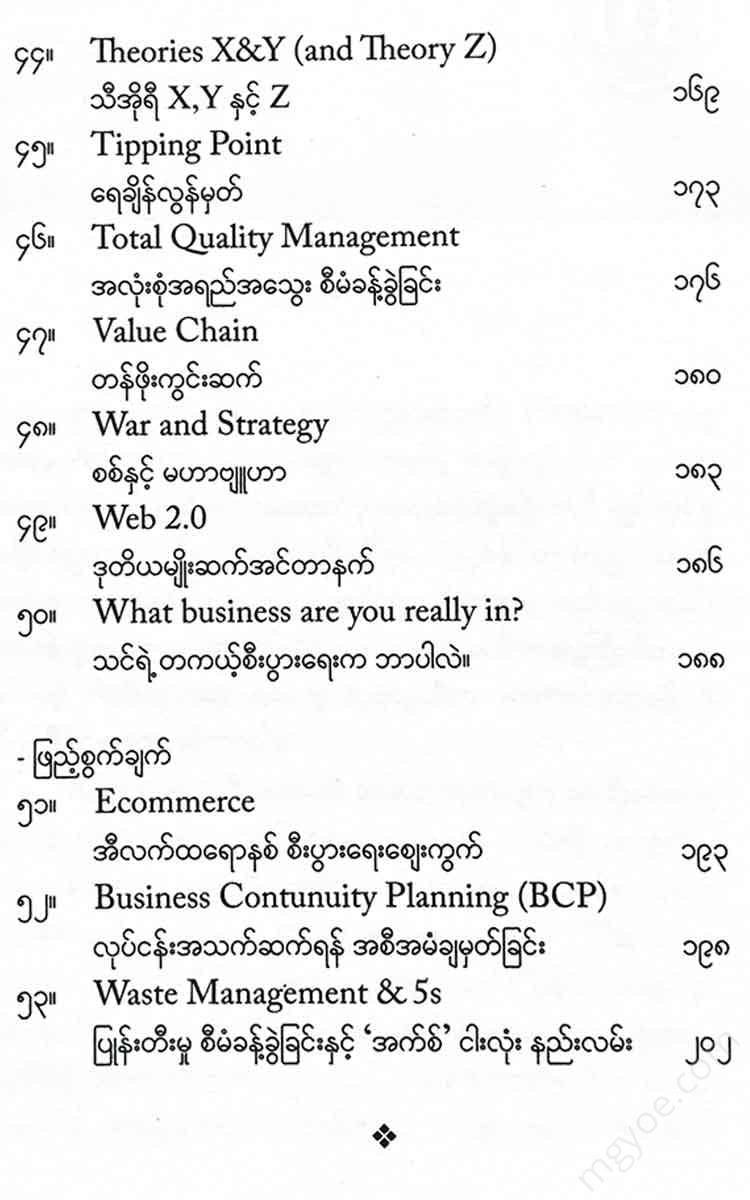စိတ်ကူးချိုချိုစာပေ
Aung Sithar - Unfamiliar Economic Ideas
Aung Sithar - Unfamiliar Economic Ideas
Couldn't load pickup availability
Adhocracy
Adhocracy is the opposite of bureaucracy in terms of organizational structure. It is a loose structure, with no central control. It is a structure that allows for rapid response. In bureaucracy, rules and structures are more important than people. But Adhocracy is designed to get the best out of people.
The term adhocracy was first coined by American leadership scholar Warren G. Bernick. In his 1968 book about the companies of the future, "The Temporary Society," co-authored with Phyllis Slater, he coined the term adhocracy, which he called "the need for a greater reliance on small, flexible, and adaptable teams." "Ad hoc" is Latin for "for this purpose." Today, it has become a byword for progress.
The more explicit idea of adhocracy was presented by Al (L) Ventoff in his seminal 1970 book "Future Shock." He argued that the future of business requires a leaner structure, more agile internal communication, and flexible project teams, teams that can be quickly formed and dismantled, and teams that can change quickly.
In 1979, Henry Finzbach identified four types of organizational structures based on the nature and complexity of the business environment.
Machine Bureaucracy - This structure is characterized by a consistent set of procedures and outcomes. It is highly centralized. It has rules, strict hierarchy, and multiple levels of activity.
Professional Bureaucracy: This system is not rigid in its approach to individual relationships, but the methods and systems that affect individuals are consistent. There will be rules and standards that are set by individuals. And the skills and traditions of the professionals and professionals in the organization are usually consistent with this structure.
For example: hospital, clinic, lawyer's association, etc.
Entrepreneurial Startup - This system is less rigid, but still centralized, with the owner directly managing small organizations.
Adhocracy is the exact opposite of bureaucratic adhocracy. There is no fixed structure. Instead, it combines the looseness of small businesses with the individual freedom of professional bureaucracy. Professionals are organized into small, flexible teams with personal autonomy. The key is to structure the work in a way that prioritizes innovation and creativity.















